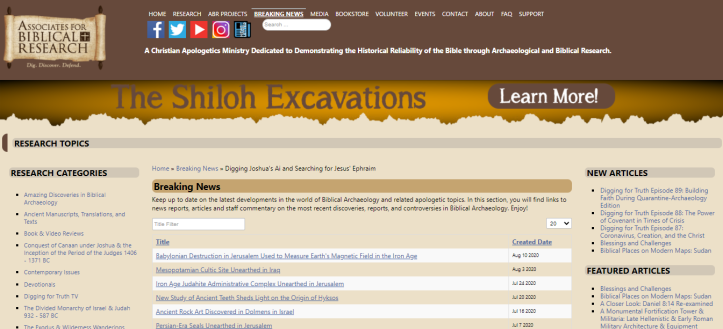
Last month new studies were conducted on the Nile River, the Beth Shemesh Inscription, and destruction layers in Jerusalem. Here were the top three reports in biblical archaeology for May 2024.
3. Long-Lost Route of the Nile Discovered Along Which Over 30 Pyramids were Built.

A team of researchers from the University of North Carolina Wilmington has identified a long-lost route of the Nile River along which over 30 pyramids were constructed. Previously scholars had theorized that the Nile must have flowed by these pyramids but this is the first time it has been confirmed. The team used satellite imagery, geophysical surveys and sediment samples to positively identify the Nile’s former route. The researchers believe a drought began almost 4,200 years ago that led to a buildup of windblown sand and caused the Nile to flow in a more easterly route. The newly identified branch of the Nile once flowed past the Dahshur, Saqqara, Abusir, and Giza pyramids and was likely used by the ancient Egyptians for transporting building materials.
2. New Study: Ancient Cuneiform Inscription from Beth Shemesh Was Likely a Scribal Student’s Practice Tablet

A new study of a cuneiform inscription discovered at Beth Shemesh 100 years ago suggests that it is a dictation exercise written by a local scribal student. The tablet, which dates to the 14th or 13th century BC, contains cuneiform wedges in an alphabetic script, with each symbol representing a sound. This contrasts with most Akkadian cuneiform inscriptions, whose characters typically either are ideograms or represent syllables. The text resembles an alphabetic cuneiform script used at Ugarit. Earlier scholars proposed that the Beth Shemesh inscription was a prayer or diplomatic text, but the new study suggests this is not the case.
A team of researchers from Ben-Gurion University tested the clay tablet and discovered that it was consistent with the clay near Beth Shemesh. The tablet is oddly shaped and not the same size as most known cuneiform tablets from that period. On the reverse, the imprints of small fingerprints were found, suggesting the tablet was made by a child. Moreover, the writer made mistakes, as corrections can be seen superimposed over the original signs. The text itself is unintelligible. All of this led the authors of the study to conclude it was a school writing exercise in which a teacher called out letters which the student wrote down. This implies that there was a local scribal school, testifying to some level of literacy in Canaan during the Late Bronze Age.
1. Authors of New Radiocarbon Study Claim to Provide Absolute Chronology for Jerusalem

A team of Israeli scholars recently published an article in PNAS, the journal of the National Academy of Sciences, in which they present new radiocarbon data that they claim provides an absolute chronology for Jerusalem in the Iron Age. The team carbon tested 103 samples of seeds and other remains from five sites around ancient Jerusalem. Previously carbon testing in the Iron Age has proved problematic because of what is known as the “Hallstatt plateau,” a period from about 800 to 400 BC during which carbon dates are inaccurate. Some scholars have suggested this may have been a period of lower solar activity which produced less of the carbon-14 isotope. To counter this difficulty, the Israeli team developed a new method of testing. According to Tom Metcalfe on LiveScience.com,
The new approach applied radiocarbon dating and a group of precise analytical methods collectively called “microarchaeology” to the layers of sediments associated with the seeds and then verified their dates with measurements of atmospheric radiocarbon from the growth rings of trees that grew between 624 and 572 B.C.
One of the surprising findings was that, according to the results of their tests, the Broad Wall in Jerusalem, also known as Hezekiah’s Wall, was likely built during the reign of Uzziah, who Scripture says built fortifications in Jerusalem (2 Chr 26:9). Another finding was that Jerusalem was much more heavily populated and urbanized in the 12h through 10th centuries BC than some scholars previously thought. This would align with the biblical description of Jerusalem, particularly during the days of David and Solomon.
Stay Up-To-Date
Get the latest BREAKING NEWS in biblical archaeology each week here: https://biblearchaeology.org/current-events-list

